Physical Address
304 North Cardinal St.
Dorchester Center, MA 02124
Rhegmatogenous retinal detachment (RRD) is uncommon in childhood. The prognosis is often poor, because children present late, sometimes only when the second eye loses vision when its retina also detaches, but also because of the aggressive proliferative vitreoretinopathy (PVR) which often accompanies childhood retinal detachment. The majority of cases of RRD in childhood are associated with inherited vitreoretinopathies, developmental abnormalities or trauma.
Traumatic retinal detachment is seen mostly in older children, usually caused by blunt trauma, where retinal tears may be found in 2%–5%. Penetrating injuries and retained intraocular foreign bodies are less common causes but are frequently associated with severe PVR.
Retinal detachment due to blunt trauma is usually caused by a disinsertion at the ora serrata in older children. Sudden anteroposterior compression of the globe with a violent coronal expansion leads to retinal avulsion ( Fig. 51.1A ) characterized by a festoon of non-pigmented pars plana epithelium in the vitreous cavity. This is the hallmark of a traumatic retinal dialysis and there may be signs of related orbital injury ( Fig. 51.2 ) or, more frequently, subtle signs of collateral trauma to the iris, lens, or drainage angle. Superior quadrant involvement is more frequent than the lower temporal quadrant involvement seen in non-traumatic dialysis ( Fig. 51.3 , and see Fig. 51.1B ). Although the disinsertion may exceed 90 degrees, the vitreous characteristically remains attached to the posterior flap so that the independent mobility that characterizes a true giant retinal tear (GRT) is not a feature. Dialyses, therefore, respond very well to conventional scleral buckling techniques. Further distinguishing features from a giant tear are the absence of radial extensions, which frequently occur at the apices of GRTs ( Fig. 51.4 ) and the normal compact healthy vitreous architecture. Subretinal fluid recruitment in dialyses is typically slow, so that unless the ora serrata is routinely inspected after blunt trauma, the diagnosis may be delayed by weeks or months until macular involvement.
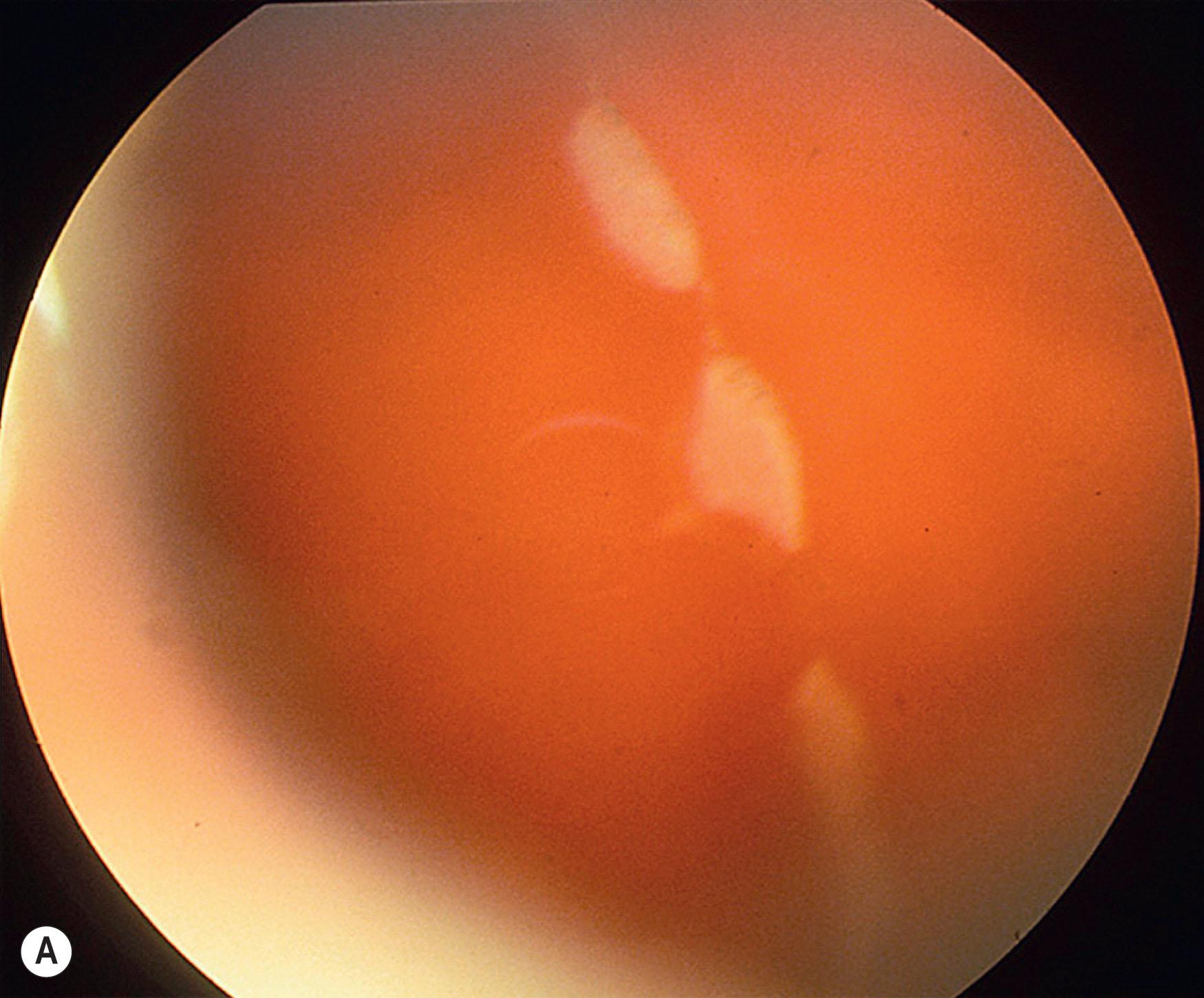
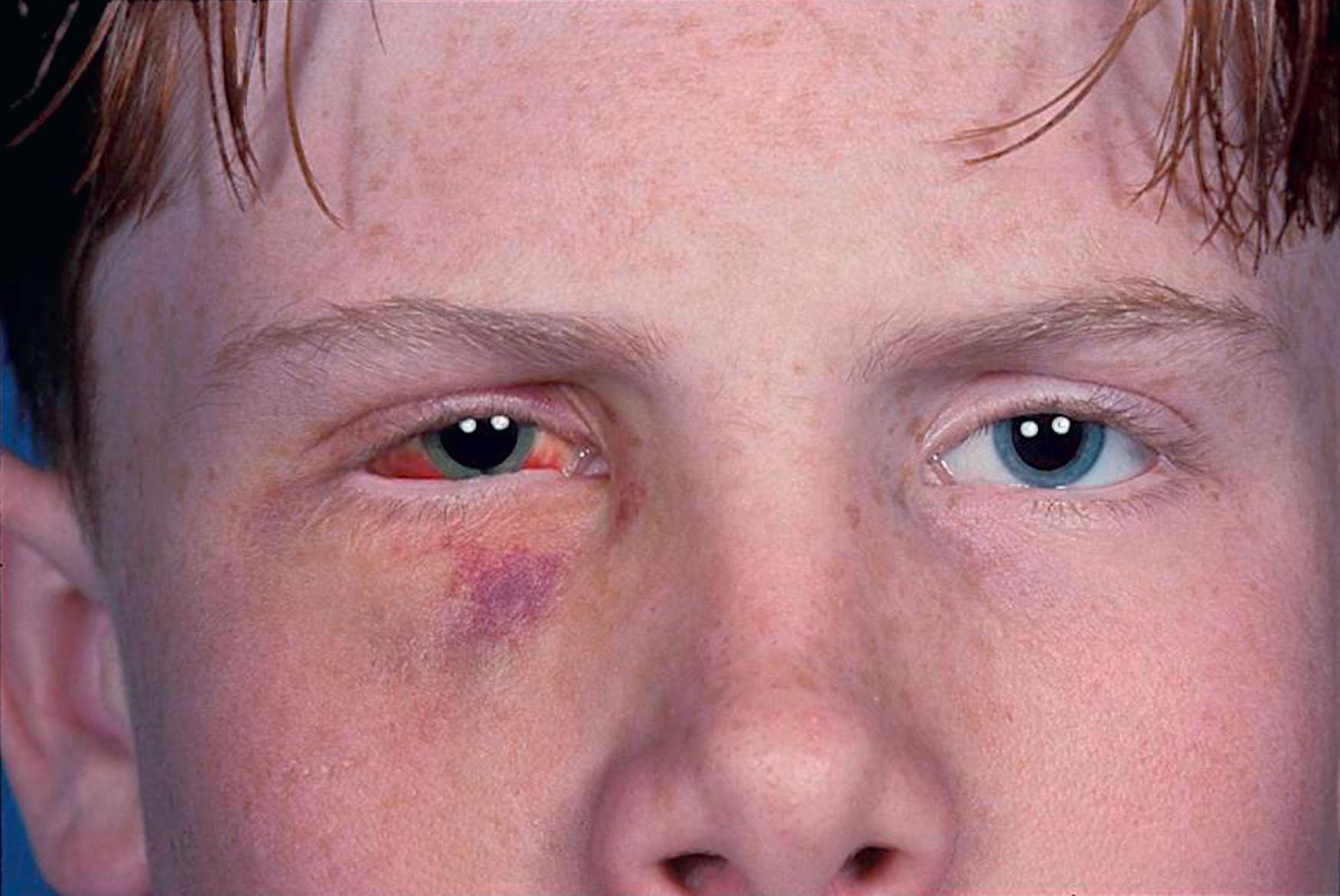
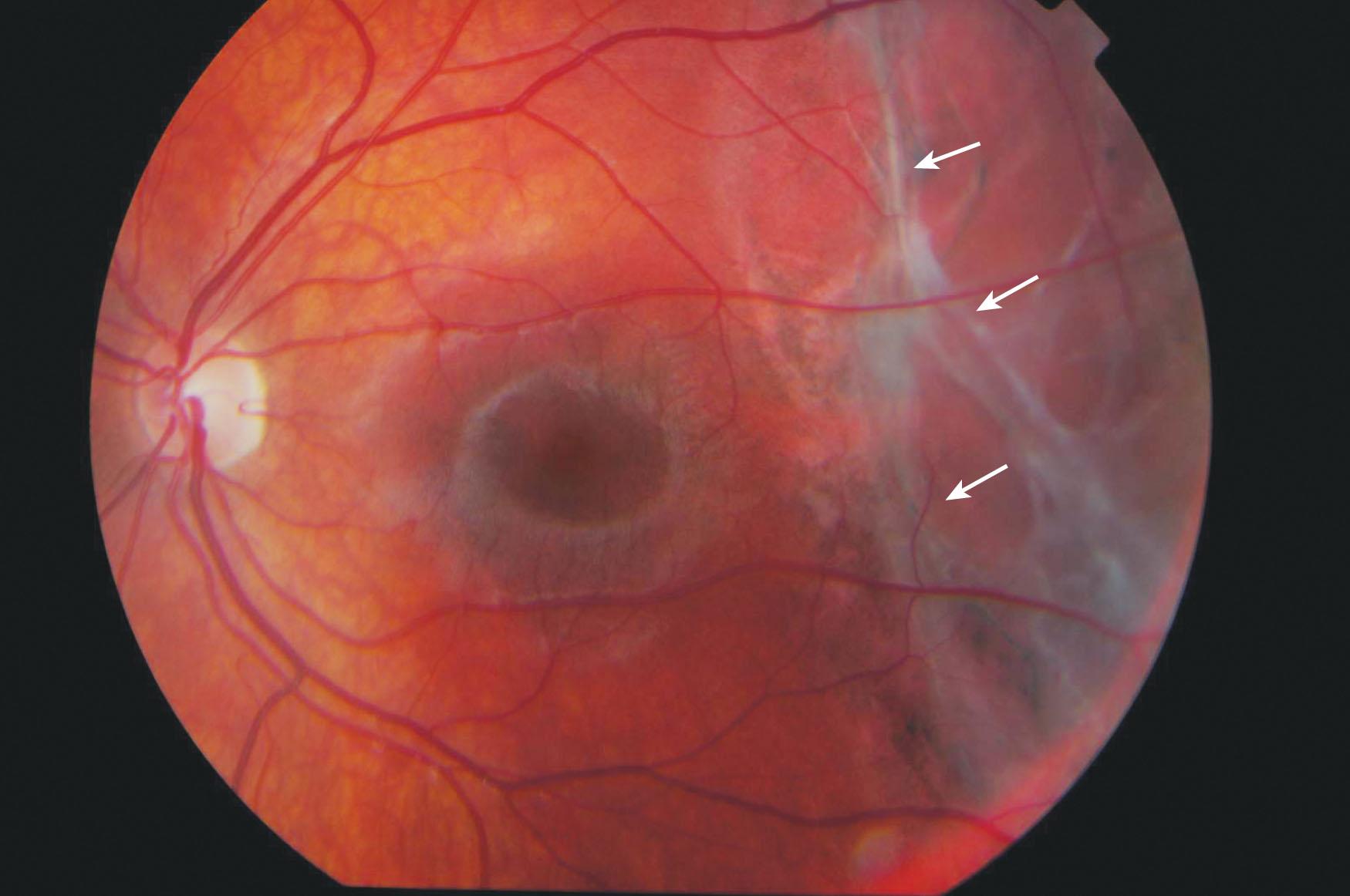
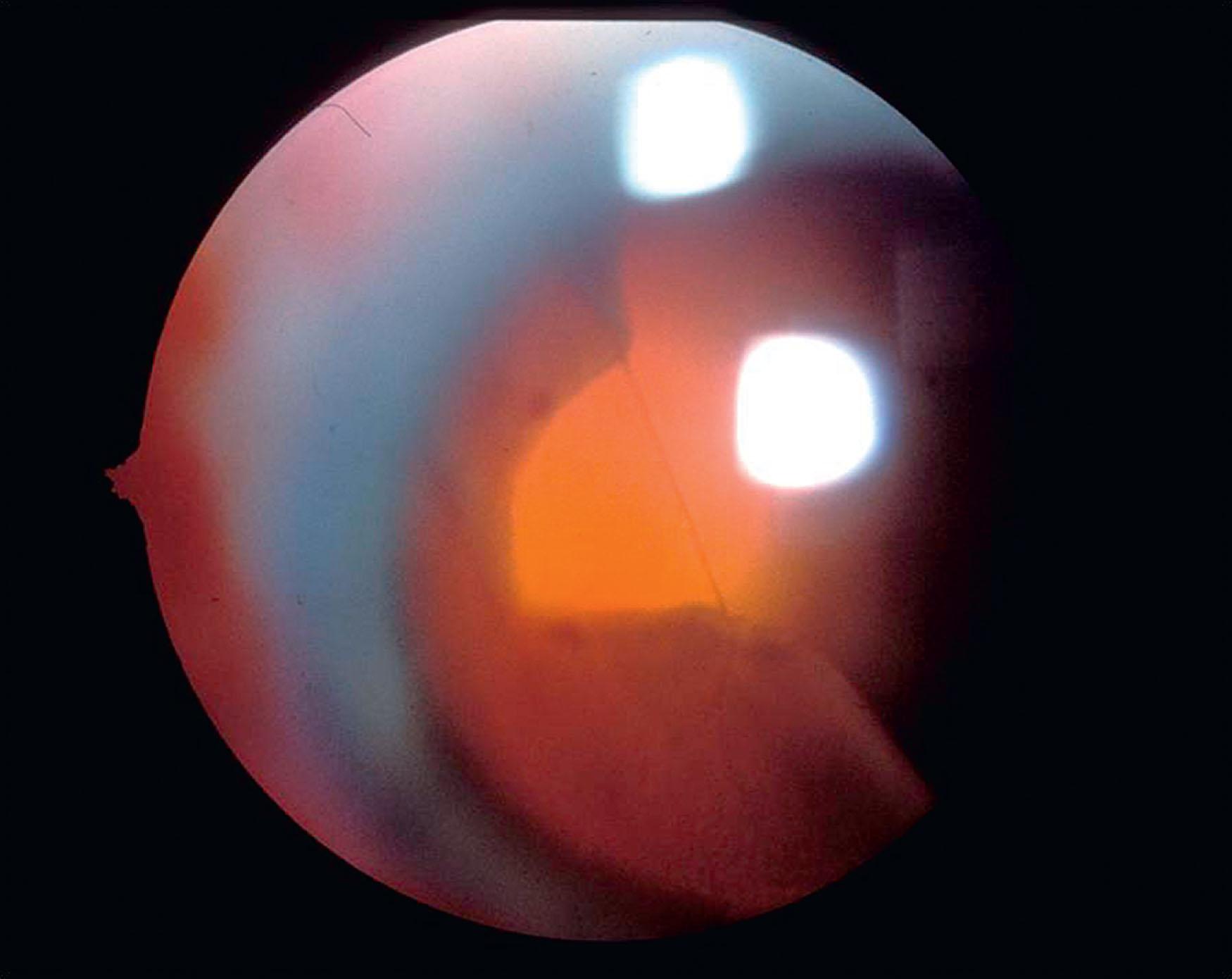
Ragged impact necrosis breaks account for about one-fifth of the retinal breaks in blunt trauma. Retinal vessel and retinal pigment epithelial disruption may be confirmed on fundus fluorescein angiography and retinal detachment usually presents within 6 weeks. These breaks are often large, post-equatorial, and irregular, making closure by external buckling problematic and an internal approach is more usually required.
True GRTs account for a minority of retinal breaks due to blunt trauma. They are best managed with vitrectomy and internal tamponade (see below) although the visual prognosis may be limited by associated collateral ocular trauma ( Fig. 51.5 ).
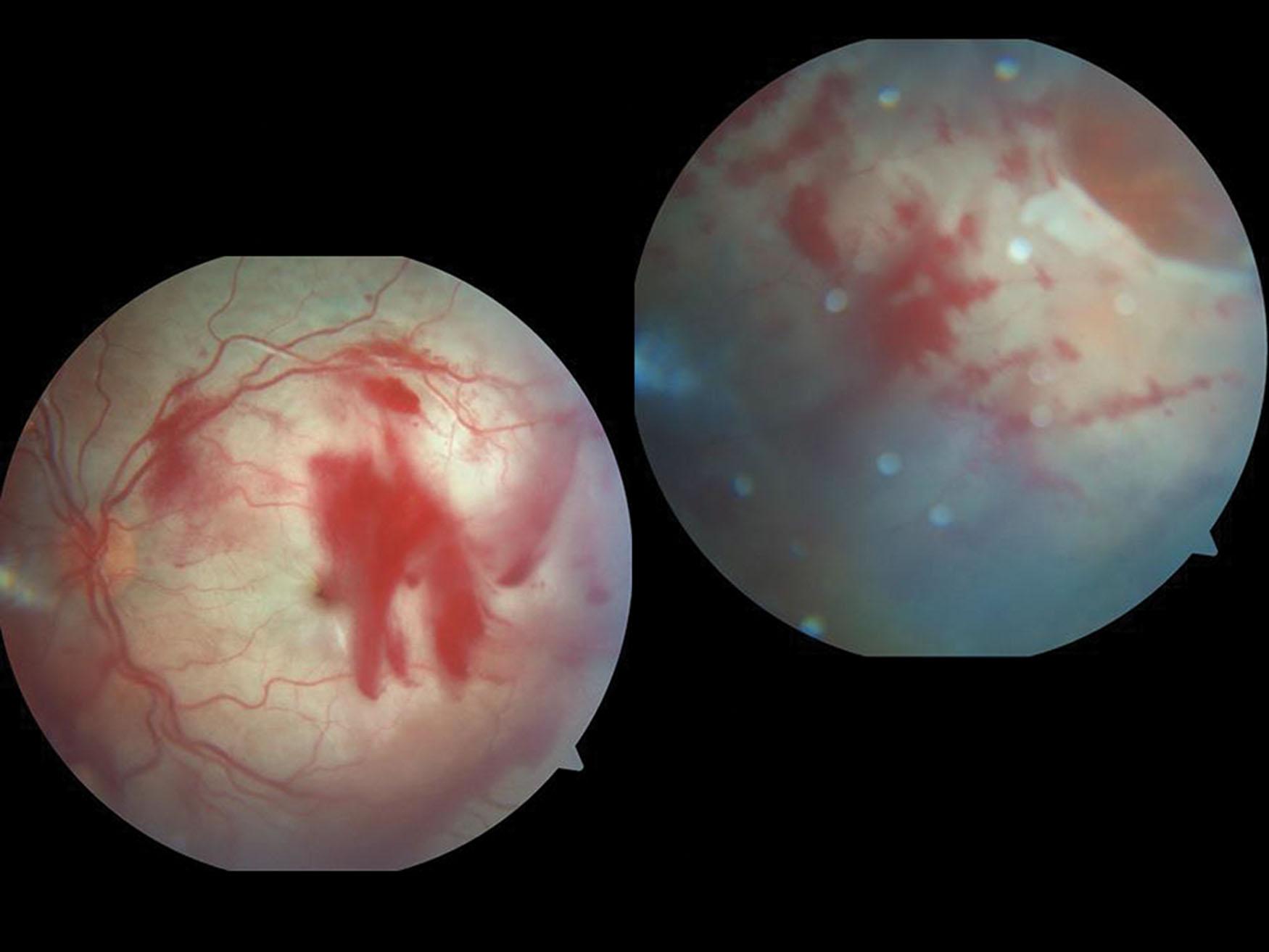
Penetrating injury is an uncommon cause of retinal detachment in childhood. Intraocular foreign bodies are rarely seen in very young children, although penetrating injuries from air-gun pellets may be seen in older children and adolescents. The prognosis is usually poor because of the associated collateral damage and aggressive PVR. Retinal perforation or incarceration from penetrating trauma rarely causes acute rhegmatogenous retinal detachment. The corneoscleral wound provides access for extrinsic fibroblasts so that the more common sequel is late tractional and rhegmatogenous retinal detachment.
Non-traumatic retinal dialysis accounts for approximately 10% of all juvenile retinal detachment and in 97% affects the inferotemporal quadrant (see Fig. 51.1B , Table 51.1 ). Examination of the entire retinal periphery may reveal two or more separate dialyses in the same eye. There is a 2:3 male propensity and the majority are hypermetropic or emmetropic. Detachments associated with dialyses progress slowly and usually present either as an incidental finding or when the macula becomes detached. They are routinely managed with conventional buckling. Although the anatomic success rate of surgery is high, visual recovery may be limited if there has been chronic macular involvement. Familial dialyses are rare, but consideration should be given to sibling examination because (1) the patients are asymptomatic and (2) visual recovery once macular involvement has occurred may be poor. Examination of the fellow eye under anesthesia is important as retinal dialysis may be bilateral and abnormalities of the ora serrata, in the form of a “frill” or flat dialysis, are found in the fellow eye in up to 15% (see Table 51.1 ). In such cases, prophylactic retinopexy should be applied to the fellow eye to avert detachment with potential macular involvement.
| Break type | Sex | PHM | Refractive error | Fellow eye pathology |
|---|---|---|---|---|
| Horseshoe tear | M=F | OFF | Myopic | 15% |
| *Round hole | F>M | ON | Myopic | 50% |
| *Dialysis | M>F | ON | Hypermetropic | 15% |
| *Giant retinal tear | M=F | OFF | Myopic | Up to 80% |
| Macular hole | M=F | OFF | Highly myopic | Rare |
| *XLRS | M | ON | Hyperopic | 100% |
Eyes with colobomas are at increased risk of detachment and account for approximately 0.5% of pediatric retinal detachments forming part of the spectrum of wider systemic developmental abnormality ( Fig. 51.6 ). GRTs may be seen in association with lens colobomas. Rhegmatogenous detachment may also develop in eyes with choroidal coloboma, when small retinal breaks occur in the hypoplastic retina overlying the coloboma. Assessment of vision can be difficult and the diagnosis of detachment can be further impaired by restricted pupil dilation, nystagmus, microphthalmos, and cataract ( Fig. 51.7 ). The intercalary membrane stretched across the coloboma cavity can simulate a retinal detachment on ultrasound examination. The clinician should be alert to this and assess the retinal mobility on dynamic examination before deciding whether surgical intervention is indicated. The intercalary membrane consists of hypoplastic inner retina with reversal and duplication of outer neuroblastic layers at the coloboma margin. Both retinal pigment epithelium and Müller cells are vestigial or absent within the coloboma; thus, effective retinopexy may be impossible to achieve unless applied outside the margin of the coloboma.
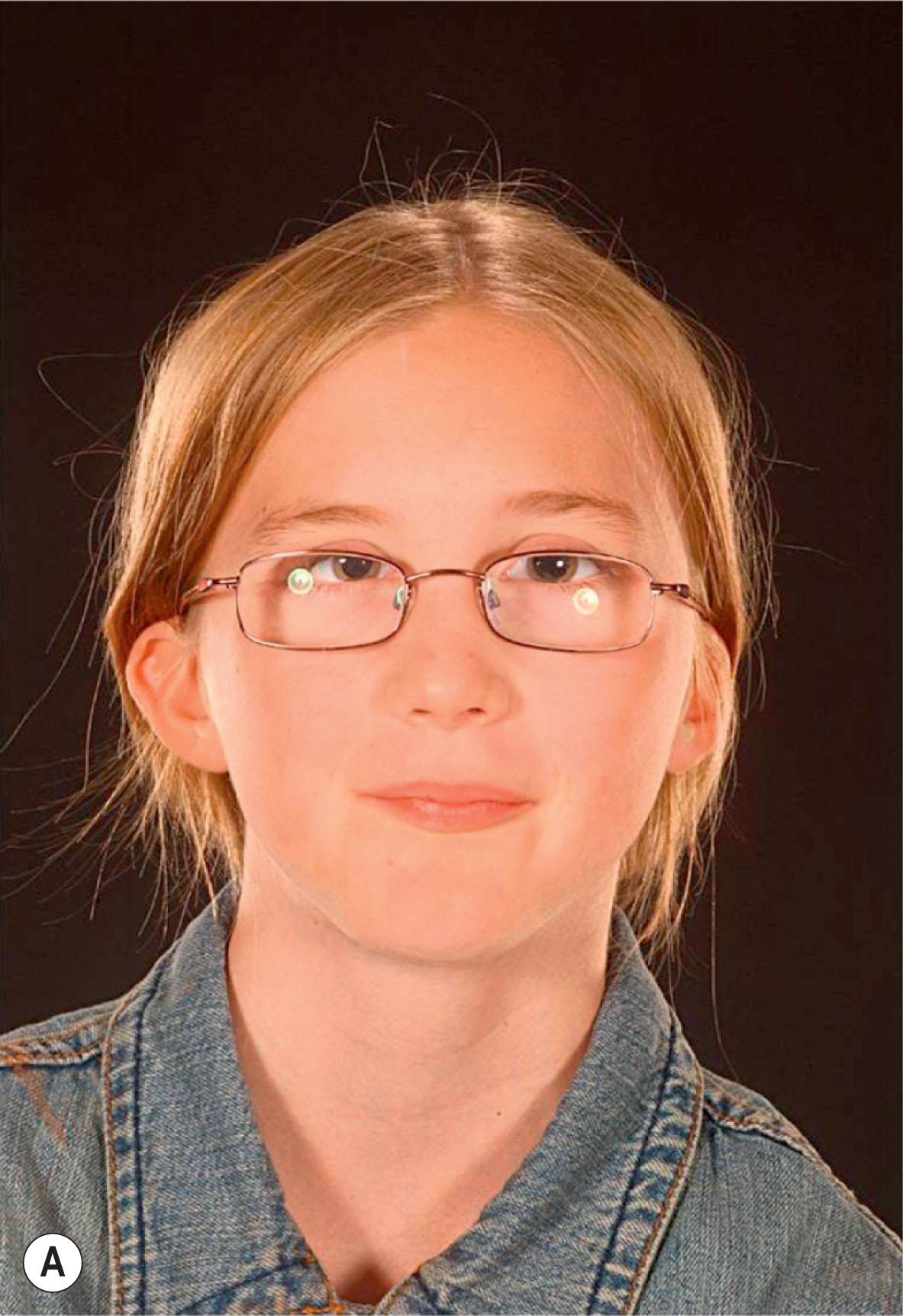
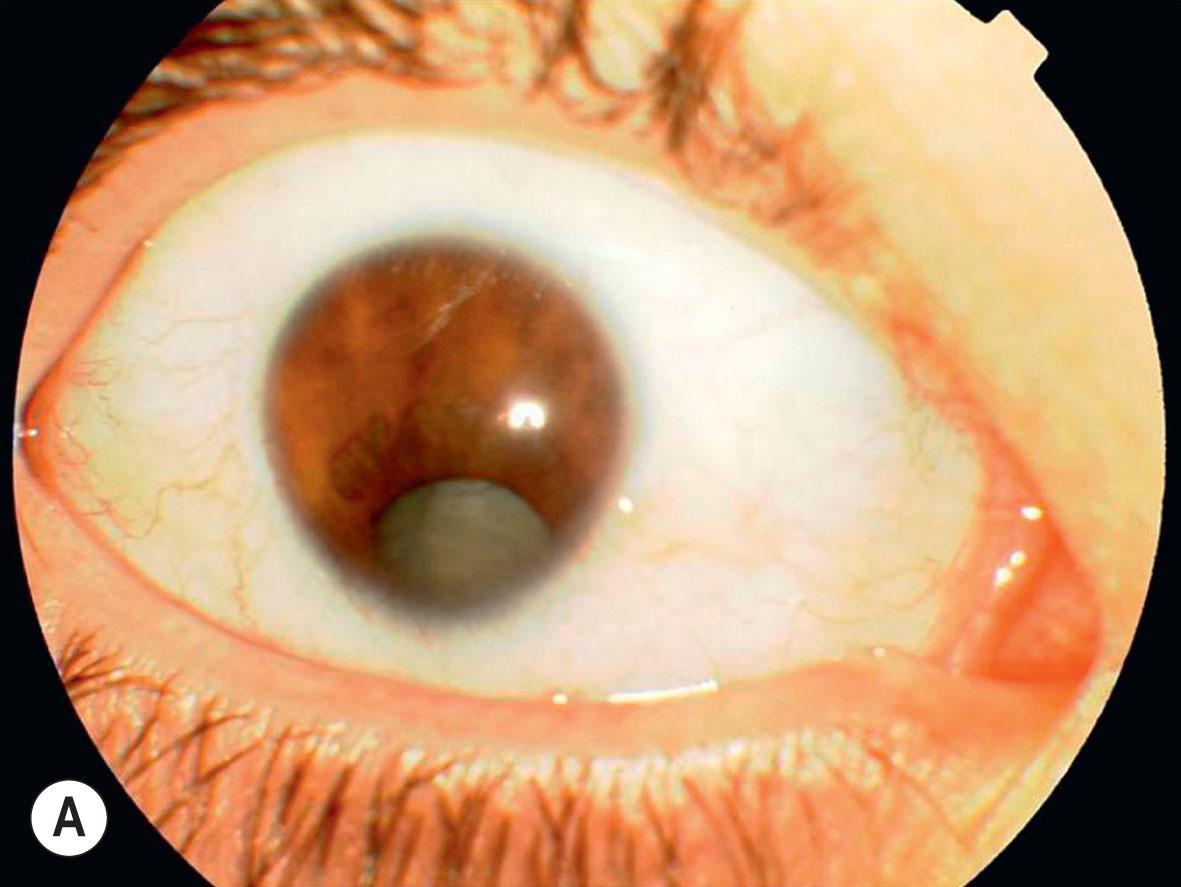
Where retinal breaks occur away from the coloboma, they may be managed by conventional buckling provided the sclera is of sufficient quality and the break can be adequately closed. More usually, the retinal break lies within the coloboma ( Fig. 51.8 ) so that identification and closure with retinopexy may be impossible without an internal approach. Retinal breaks over a coloboma are often small, multiple, and difficult to visualize against the pale scleral background. The break(s) may be confirmed peroperatively by visualization of proteinaceous subretinal “ schlieren” which appears during internal drainage. Laser may be applied around the border of the colobomatous area and where this includes the papillomacular bundle it may be applied prior to retinal reattachment to minimize thermal damage to the nerve fiber layer. An adequate tamponade may be difficult to obtain because of the abnormal configuration of the colobomatous globe. Recurrent detachment may occur in up to 30%, necessitating permanent internal tamponade.
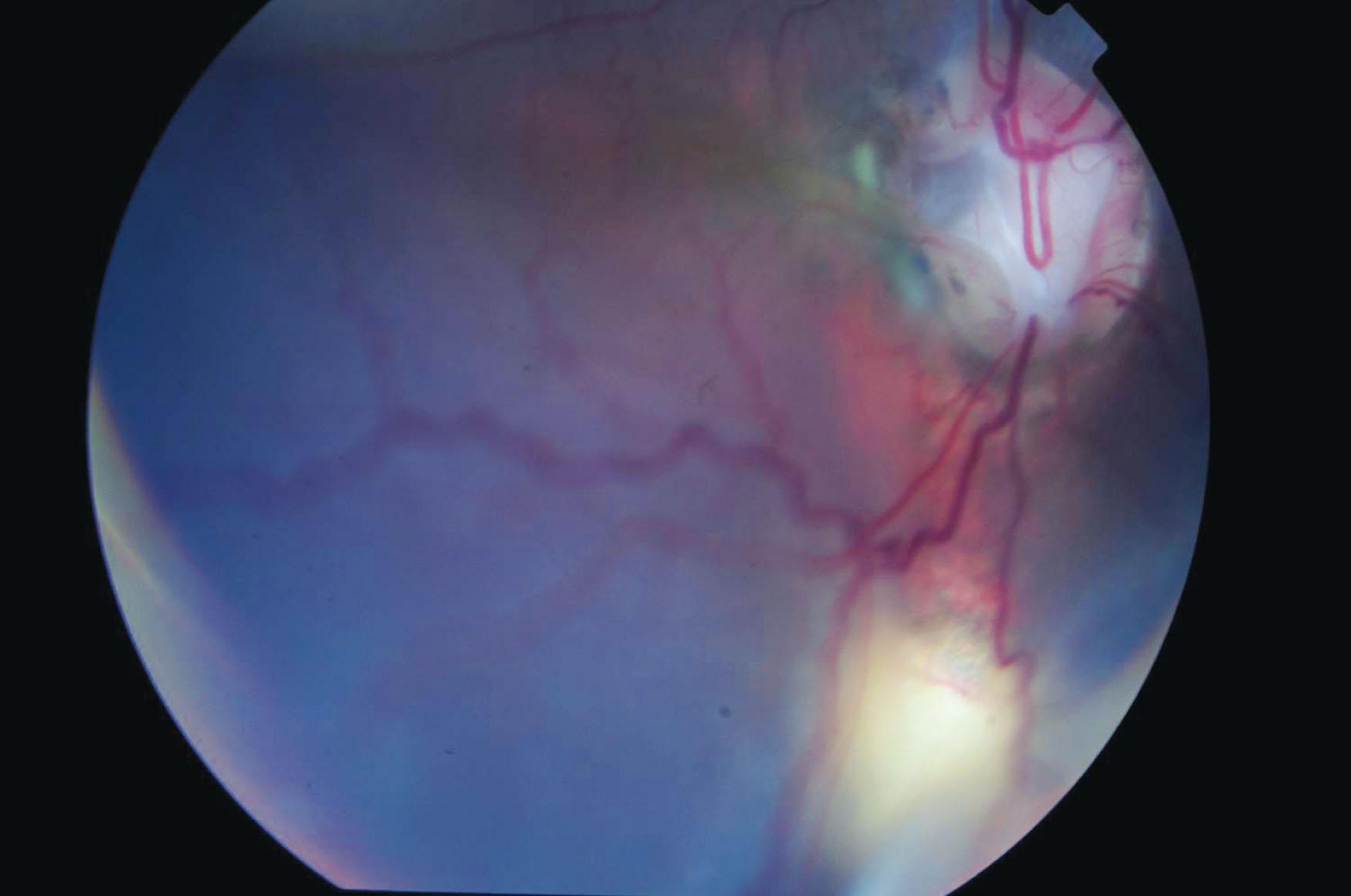
The association of serous macular detachment and optic disc pits and coloboma is well recognized and similar findings with the morning glory disc abnormality suggest that these conditions are variations of the same abnormality ( Fig. 51.9A-D ). The vitreous is characteristically attached. It has been suggested that up to 45% of optic disc pits may be complicated by serous retinal detachment.
![Fig. 51.9, (A–B) Two examples of optic disc colobomas associated with macular detachment (arrows). (C–D) Child (optic disc pit with serous macular detachment [arrows]) and parent (choroidal coloboma [arrowhead]), respectively, illustrating in-herited etiology in some cases. Fig. 51.9, (A–B) Two examples of optic disc colobomas associated with macular detachment (arrows). (C–D) Child (optic disc pit with serous macular detachment [arrows]) and parent (choroidal coloboma [arrowhead]), respectively, illustrating in-herited etiology in some cases.](https://storage.googleapis.com/dl.dentistrykey.com/clinical/Retinaldetachmentinchildhood/8_3s20B9780702082986000512.jpg)
Although natural history studies have shown eventual spontaneous reattachment in 25% of cases the combination of vitrectomy, laser photocoagulation, and gas tamponade may offer a greater chance of visual improvement, albeit at greater risk of operative morbidity.
Inherited vitreoretinopathies are the basis for the majority of rhegmatogenous retinal detachments in childhood and may be classified as follows:
Vitreoretinopathies with skeletal abnormalities
Vitreoretinopathies with progressive retinal dysfunction
Vitreoretinopathies with abnormal retinal vasculature
Vitreoretinopathy with corneal changes.
The detachments are often complex and frequently associated with GRTs.
Vitreoretinopathies associated with skeletal abnormalities form the largest subgroup ( Table 51.2 ). Of these, the Stickler syndromes in various guises account for the majority.
| Syndrome | Gene | Cytogenetic location | Distinguishing features | Phenotype OMIM No. | |
|---|---|---|---|---|---|
| Stickler syndrome | |||||
| Type 1 | COL2A1 | 12q13.11 |
|
108300 | |
| Ocular only | COL2A1 | 12q13.11 |
|
609508 | |
| Type 2 | COL11A1 | 1p21.1 | Beaded type 2 congenital vitreous anomaly, retinal detachment, congenital megalophthalmos, deafness, arthropathy, cleft palate | 604841 | |
| Type 2 recessive | COL11A1 | 1p21.1 | Autosomal recessive, beaded congenital vitreous anomaly, retinal detachment, congenital megalophthalmos, cleft palate, profound severe congenital deafness | TBC | |
| Type 3 | COL11A2 | 6p21.32 |
|
184840 | |
| Type 4 | COL9A1 | 6q13 | Recessive inheritance, sensorineural deafness, myopia, vitreoretinopathy, retinal detachment, epiphyseal dysplasia | 614134 | |
| Type 5 | COL9A2 | 1p34.2 | Recessive inheritance, sensorineural deafness, myopia, vitreoretinopathy, retinal detachment, epiphyseal dysplasia | 614284 | |
| Type 6 | COL9A3 | 20q13.33 | Recessive inheritance, sensorineural deafness, myopia, vitreoretinopathy, retinal detachment, epiphyseal dysplasia |
|
|
| Type 7 | BMP4 | Hypoplastic vitreous, retinal detachment deafness, arthropathy, palate abnormality, renal dysplasia | TBC | ||
| Type 8 | LOXL3 | 2p13.1 |
|
TBC | |
| Kniest dysplasia | COL2A1 | 12q13.11 | (usually) Type 1 membranous congenital vitreous anomaly, retinal detachment, congenital megalophthalmos, severe arthropathy, short stature, phalangeal dysplasia | 156550 | |
| Spondyloepiphyseal dysplasia congenita (SEDC) | COL2A1 | 12q13.11 | (usually) Type 1 membranous congenital vitreous anomaly, retinal detachment, congenital megalophthalmos, severe short stature, rhizomelic limb shortening, barrel chest | 183900 | |
| Marfan syndrome | FBN1 | 15q21.1 | Developmental myopia, retinal detachment, iris abnormality, cornea plana, arachnodactyly and joint laxity, pneumothorax, hernia, aortic root and cardiovascular abnormality | 154700 | |
| Wagner syndrome | VCAN | 5q14.2-q14.3 | Early cataract, pseudoexotropia, erosive vitreoretinopathy | 143200 | |
| Czech syndrome | COL2A1 | 12q13.11 | Hypoplastic vitreous, retinal detachment, cleft palate, normal stature, spondyloarthropathy, short postaxial toes | 609162 |
The Stickler syndromes form part of the spectrum of type II/IX/XI collagenopathies. At least 11 clinically different subgroups have been identified (see Table 51.2 ) and further genetic heterogeneity remains to be resolved.
The majority of cases seen by ophthalmologists will be type 1 Stickler syndrome, inherited in an autosomal dominant fashion. However, a significant minority result from de novo mutations so there will be no diagnostic help from a family history. Spondylo-epiphyseal dysplasia congenita (SEDC), Kniest dysplasia, vitreoretinopathy with phalangeal epiphyseal dysplasia (VPED), and Czech dysplasia (see below) are all allelic with type 1 Stickler syndrome but usually result from dominant negative rather than haploinsufficiency mutations resulting in more severe skeletal dysplastic changes. As with type 1 Stickler syndrome, the risk of blindness from retinal detachment is high and variations in pre-mRNA splicing of COL2A1 can in some instances blur the clinical differential between these allied type II collagenopathies.
The ophthalmologist has a key role in the identification, diagnosis, and prevention of blindness in the increasingly widely recognized subgroups with ocular-only (or minimal systemic) involvement. Without diagnosis and prophylaxis in such subgroups, these children are at high risk of GRT detachment and blindness, where late presentation and second eye involvement can be devastating.
Become a Clinical Tree membership for Full access and enjoy Unlimited articles
If you are a member. Log in here